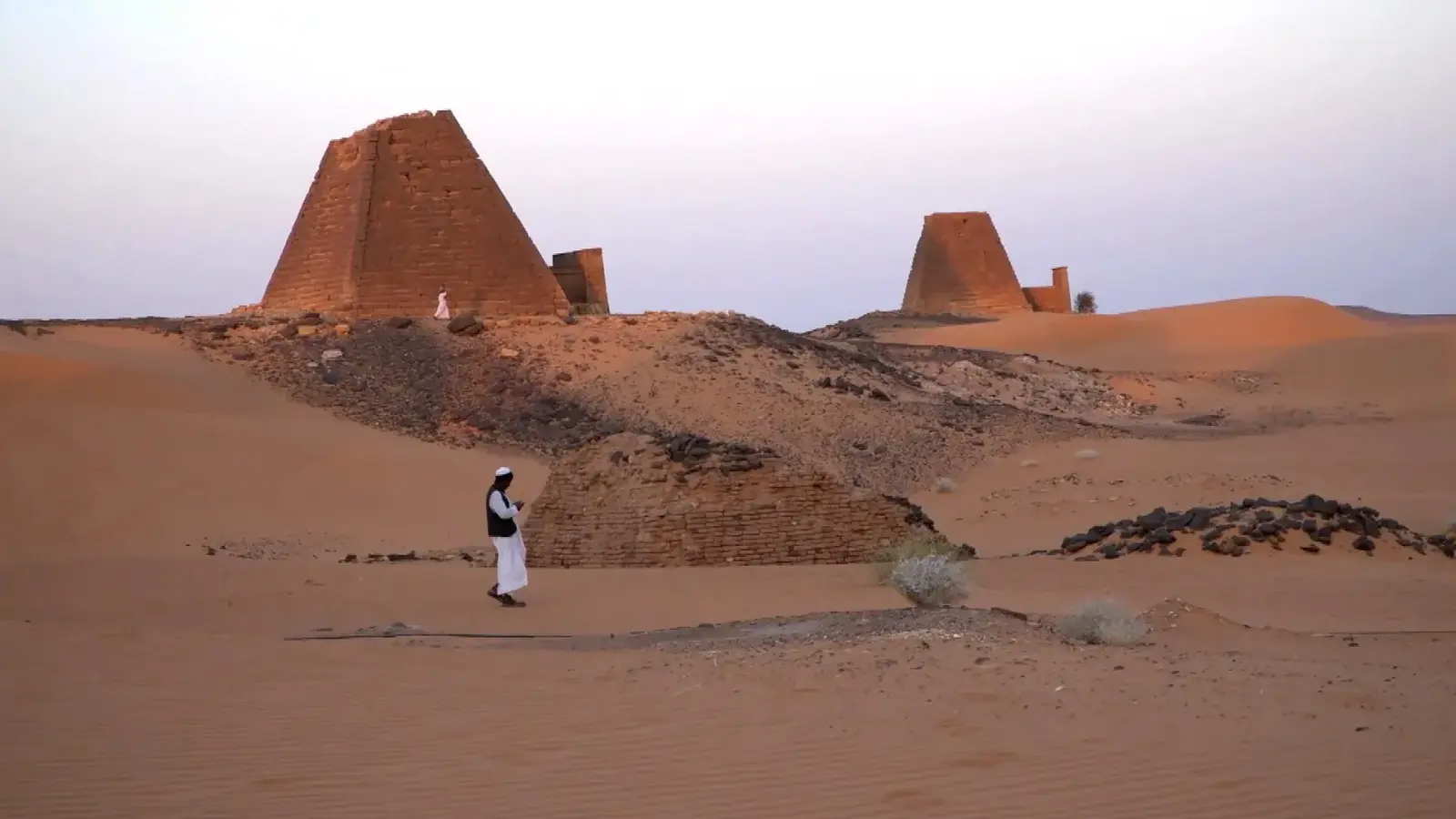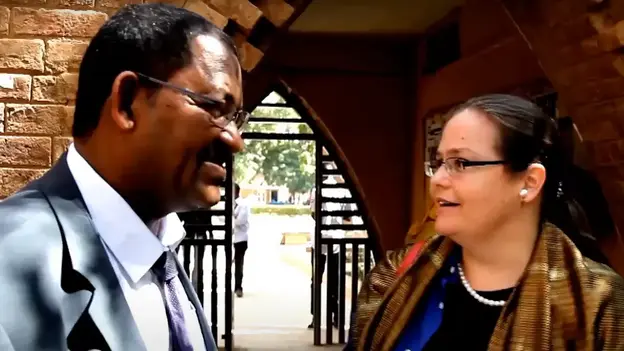Tandem Project
An Egyptologist and a Chemist Team Up to Study Ancient Artwork
Field Research & Workshop
The archaeological sites of Meroe in Sudan were in the heartland of the historic kingdom of Kush, a major regional power from the 8th century B.C. to the 4th century A.D. Meroe played a crucial role as principal residence of the Kushitic rulers, and features temples and pyramids as well as domestic buildings. A scientific study of the preserved architectural remains and their iconography is therefore of high interest to reconstruct and understand the relations and exchange of ideas between sub-Saharan Africa, the Mediterranean region and the Middle East. In 2011, the archaeological sites of Meroe have been added to UNESCO’s World Heritage List.
Teaming up to study artworks from Meroe, Gebel Barkal, Sudan
In a highly interdisciplinary research project, Prof. Dr. Verena Lepper and Prof. Dr. Abdalla Elbashir joined forces and analysed archaeological materials from Meroe and further Sudanese archaeological sites for the first time in Sudan by the use of different chemical methods. For this purpose, samples were collected from the field beforehand. The main aim of this sampling was to clarify classification and dating problems, to investigate decay processes, and to contribute to the development of conservation strategies of archaeological artefacts.
Chemical fingerprinting of archaeological materials
The characterization of the artworks and archaeological materials was based, among other techniques, on the application of Fourier Transform Infrared Spectroscopy (FT-IR), X-ray Diffraction (XRD) and X-Ray Fluorescence (XRF), and Thermogravimetric analysis (TGA). FT-IR, for instance, allows a non-destructive fingerprinting of the sample without any chemical transformation. On the basis of infrared absorption, it is possible to identify different materials present in a sample. However, in archaeological samples, materials are often present in complex mixtures of components in various degradation states. In many cases, FT-IR analyses are then no longer sufficient to allow a precise identification of aged mixtures of natural materials. Only through the combination of different complementary analytical techniques can a comprehensive overview of the chemical composition of the investigated samples be gained.
Developing joint conservation strategies for cultural heritage sites
The results obtained from this multi-analytical study were further compared with the current state of research. As the archaeological materials studied had never been analysed before by means of the above-mentioned methods, new research findings were to be expected. The outcomes of this interdisciplinary Tandem project were published Open Access in a high-ranking international journal to increase the outreach of the results and to introduce the innovative methodology to a large research community.
The research project was based on an archaeological fieldtrip with Sudanese archaeologists to the relevant Meroitic sites and a workshop that was held at the University of Khartoum at the Department of Archaeology with high-ranking Sudanese, German and international scholars. The National Museum of Sudan and the National Corporation of Antiquities and Museums was also included here. Additionally, a meeting with the German Ambassador in Sudan took also place. Together, the experts discussed new approaches for the development of joint conservation strategies for cultural heritage sites from different perspectives, including the natural sciences. As a result a new teaching program was conceptualized at Khartoum University including Archaeology and Chemistry. The two disciplines would not have met without AGYA. The workshop also contributed to broadening the AGYA network in Sudan.
- Disciplines Involved
- Archaeology, Chemistry, Egyptology, Museology
- Cooperation Partner
- University of Khartoum, Sudan
- Venue
- Faculty of Arts, University of Khartoum, Khartoum, Sudan (Workshop)
- Naga, Meroe area, El Musawwarat, Gebel Barkal, Sudan (Field Trip)
- Project Title
- A Multi-Analytical Approach for the Characterization of Artworks and Archaeological Materials from Archaeological Sites in Sudan
- Year
- 2016
- Funding Scheme
- Tandem Project
- Countries Involved
- Germany, Sudan
- AGYA Publication
- Multi Analytical Approach for Characterization of Archaeological Mercatic potsherds
- Spectroscopic Approach for Characterization of Archaeological Potsherds Excavated from Some Neolithic Sites from Sudan
Get insights into this interdisciplinary research project



